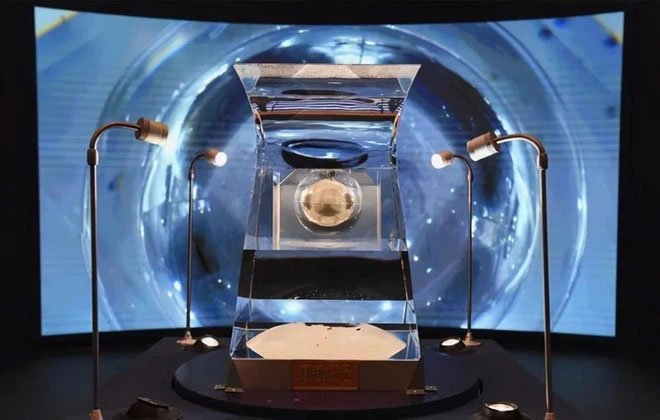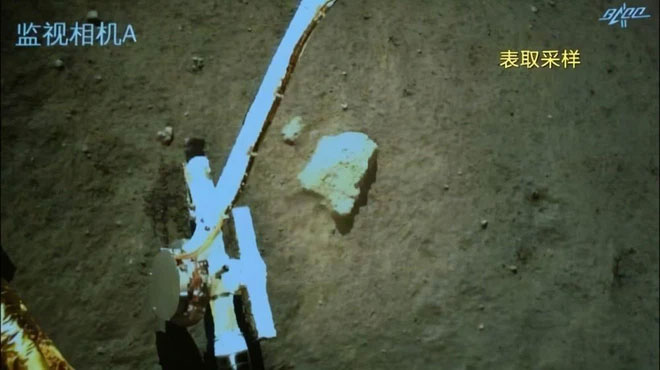On the morning of December 17, 2020, the Chang’e 5 lunar probe from China safely landed back on Earth with newly collected Moon samples. After conducting research and analysis, scientists discovered the existence of glass in lunar soil.
In the lunar environment, silica exists in molecular form and makes up about 45% of the total mass of lunar minerals. Therefore, with sufficient heat, silica can instantly form quartz sand.
The transformation process into glass occurs rapidly when meteoroids collide directly with the lunar surface. A significant amount of heat generated will directly affect the transformation of silica and quartz sand into glass in this region.

Conducting experiments to analyze lunar soil samples brought back by Chang’e 5. (Photo: Sohu)
This surprising discovery raises questions about previous lunar missions conducted by the United States. They brought back over 380 kg of lunar samples but have never published experimental results regarding them.
Did the United States not find this anomaly?

The sampling process is recorded by explorers. (Photo: Sohu)
As of now, only the United States, the Soviet Union, and China have successfully completed lunar surface sampling missions.
From 1969 to 1972, the United States successfully conducted six manned lunar missions and brought back a total of 382 kg of lunar samples, while the Soviet Union managed to return only 301 grams using unmanned probes.
As the first nation to realize manned space exploration technology, the United States separated the collected lunar samples and distributed them to over 100 countries worldwide to demonstrate its great power, with China receiving 1 gram of lunar samples in 1973.
In 1978, the Chinese Academy of Sciences utilized 1 gram of lunar soil for research and published 14 significant scientific papers, showcasing their determination to conquer space. China proved its commitment with the safe return of Chang’e 5 along with 1731 grams of lunar soil recently.
Some experts explain that the absence of glass in the lunar soil samples provided by the United States differs from the samples collected by Chang’e 5. What Chang’e 5 collected is true lunar soil, while the samples presented by the United States are merely fragments from rocks resulting from lunar weathering, indicating a significant difference between them.
In fact, many documents concerning lunar soil in the United States previously mentioned the existence of glass particles, but they did not pay much attention to it.
This action by the United States has raised many questions and calls for thorough involvement from other countries to clarify the issues surrounding the mysteries of space science.





















































